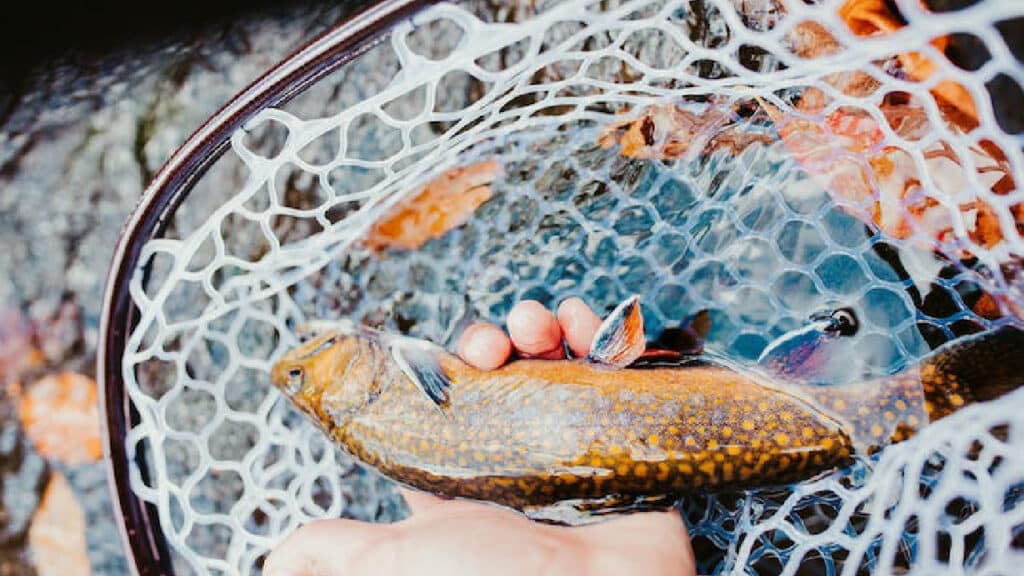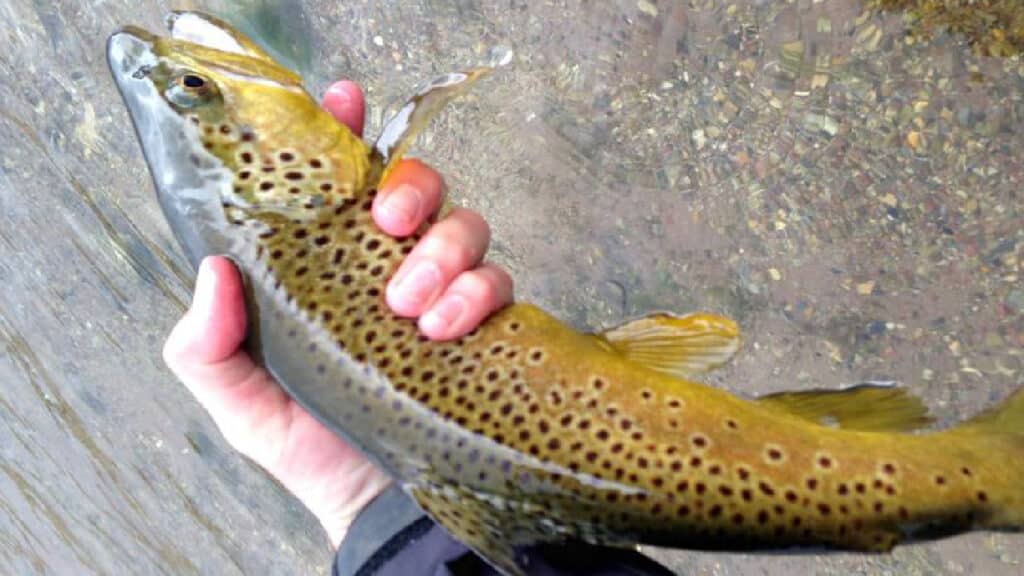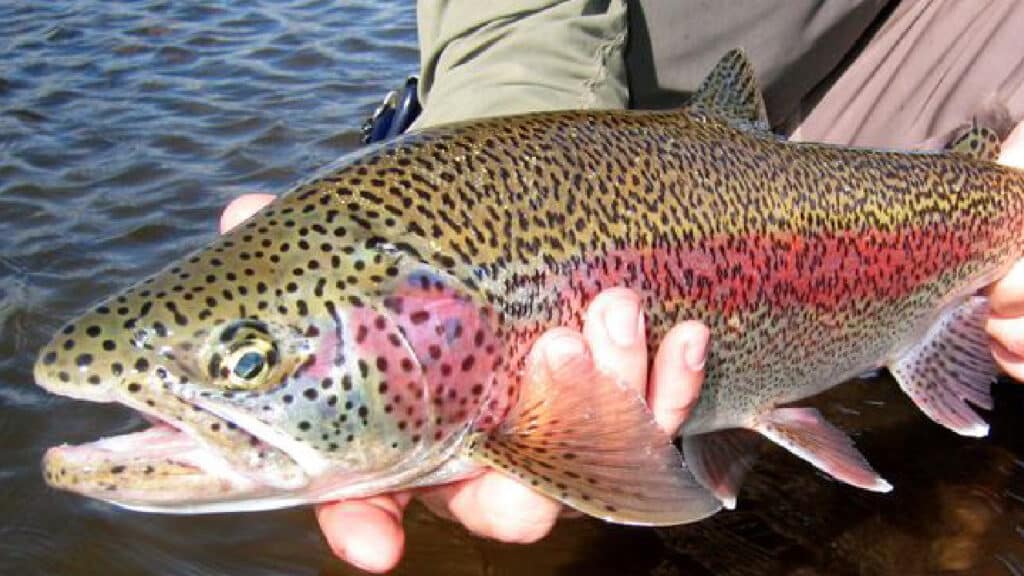How to Identify Trout Species? Trout Adventures!
Introduction
Rooming on a fishing venture can be stirring, but classifying diverse species, particularly trout, is critical for any angler. In this inclusive guide, we’ll walk you through the key features and guidelines on classifying trout. No matter you’re a learner or an expert angler, improving your trout identification expertise can supplement a new length to your angling involvement.

How to Identify Trout Species
Brook trout (Salvelinus fontinalis) claim distinctive features that fixed them separately in the world of stream fish. Identifying these features is important for anglers and nature fanatics identical. Brown trout (Salmo trutta) are famous for their mysterious nature and different coloring, offering a exceptional set of features for identification. Rainbow trout (Oncorhynchus mykiss) fascinate anglers and nature devotees with their pulsating colors and distinguishing characteristics.
Characteristics of Brook Trout
Color
One of the utmost outstanding distinction of brook trout is its pulsating coloration. These fish naturally have a dark green to brownish texture on their vertebral, decorated with a lovely mottled, spotty or marbled arrangement spreading to their edges. This distinctive coloring delivers outstanding disguise in their natural habitations, such as clear watercourses and timbered waterways.
Spots
The spotting shape on brook trout is a important identifier. Look for the iconic red or orange spots that decorate their wings, spinal, dorsal fin, and tail. These spots are habitually fenced by a distinct bluish nimbus, making a visually fabulous variety beside the length of the fish.
Fins
Probing the fins can deal extra signs for identification. Brook trout classically characterize white leading ends on their pelvic, pectoral, and anal organs, subsidizing to their generally artistic charm. The adipose fin between the dorsal fin and tail may also endure spots, adding to the complex pattern.
Body Shape
Related to other trout classes, brook trout have a stouter and more vigorous body figure. This heaviness and their distinguishing coloring set them apart in their natural surroundings. While size can differ, brook trout normally reveal a further dense method than extra trout’s shinier shapes.

Size
Brook trout are identified for being somewhat small, naturally reaching from 6 to 18 inches. Although more protruding entities can be originating, particularly in well-maintained environments, the typical size variety remains a valued identifier for these attractive fish.
Habitat
They are considerate the favored environment of brook trout helps in their identification. These fish flourish in cool, clear watercourses and streams, habitually found in woody parts with stones or rock-strewn extremities. Their mysterious nature may clue them to search for shelter in deeper ponds or under flooded constructions, creating them well-adapted to their atmosphere.
Characteristics of Brown Trout
Brown trout (Salmo trutta) are famous for their indefinable environment and varied coloring, offering an exclusive set of features for identification. As anglers and nature fanatics endeavor into river surroundings, indulgent these key structures become vital for knowing the fascinating brown trout.
Color
The coloring of brown trout is particularly varied, reaching from olive to brownish types. Their backbones show a dimmer shade, transitioning to brighter, yellowish sides. This flexible coloring permits them to disguise efficiently in numerous water surroundings, from clear watercourses to foggy tributaries.
Spots
One of the significant structures of brown trout is their spotting pattern. These fish frequently glass case an abundance of red and black marks that decorate their sides, back, dorsal fin, and tail. Contrasting brook trout, the brown trout spots lack the distinct bluish nimbus, as long as a serious difference between the two species.

Fins
Observe the fins for extra identification signs. Brown trout naturally have insufficient to no spots on their fins, setting them distant from brook trout. The adipose fin, positioned between the dorsal fin and tail, is typically spotless.
Body Shape
Compared to brook trout, brown trout keeps a more efficient body form. Their figures are extended, permitting them to steer quickly over flowing waters. This efficient form contributes to their repute as powerful swimmers.
Size
Brown trout are recognized to nurture larger than nearly other trout species. While size can be different dependent on issues such as locale and food, brown trout is not uncommon to go beyond 30 inches in length. Their budding for large growing adds an thrilling component to fishing quests.
Habitat
Brown trout are flexible and can flourish in varied marine atmospheres. They are normally originate in streams, watercourses, ponds, and pools, representing a partiality for well-oxygenated waters with irritate or stony extremities. Their capacity to adjust to diverse locales subsidizes to their extensive delivery.
Characteristics of Rainbow Trout
Rainbow trout (Oncorhynchus mykiss) fascinates anglers and nature fanatics with their exciting colors and distinguishing topographies. Classifying these active fish includes identifying the exclusive behaviors that distinguish rainbow trout in stream ecologies.
Color
The utmost noticeable feature of rainbow trout is their intense and shimmering coloring, contributes to their name. Rainbows display a attractive collection of hues, reaching from silver tones to pink or reddish shades on their edges. The pink band consecutively along their adjacent line improves to their pictorial demand.
Spots
Rainbow trout are decorated with slight, black mark that sprinkle their backbone, dorsal fin, and tail. However contemporary, these marks are normally elusive than the noticeable marking on other trout species. The deficiency of the bluish nimbus perceived in brook trout spots extra helps in distinctive rainbow trout.
Fins
Inspecting the fins offers further signs for identification. Rainbow trout classically have a well-defined adipose fin among the dorsal fin and tail. On the other hand some noticing may happen on the fins, it is typically less marked than on the body, contributing to a smooth look.

Body Shape
Rainbow trout assertion a efficient and extended body form, easing their aptitude to steer quickly through flowing waters. This capable form and striking colors mark them a visually pleasing classes in freshwater environments.
Size
Rainbow trout can differ considerably in size, liable on aspects for example territory and nutrition. Naturally, they range from 12 to 30 inches long, though further noticeable people can be establish. Their possible for considerable growing adds delight to fishing activities directing these iconic trout.
Habitat
Rainbow trout are adaptable and can flourish in numerous atmospheres. They are usually found in waterways, rivers, ponds, and streams with cool, well-oxygenated water. The flexibility of rainbow trout to numerous surroundings subsidizes to their popularity between anglers globally.
Trout identification is very important for anglers for successful fishing. To learn more about getting aware of difference between trout species or other fishes like salmon etc., you can read more on research article shared by ReseachGate.
Conclusion
Becoming skillful at classifying trout types advances your angling practice and guarantees compliance with angling guidelines. By paying attention to important features such as coloring, spots, fins, and habitat, you’ll be well-equipped to classify the varied and attractive biosphere of trout throughout your next casting trip. Happy angling!







